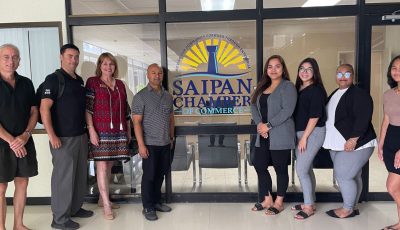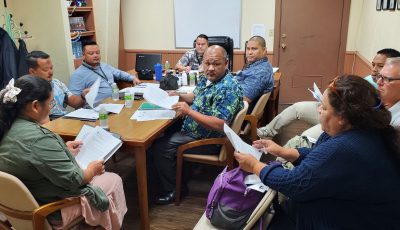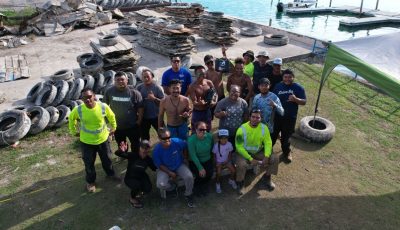Students and teachers from 6 schools take part in virtual MINA orientation
The Micronesia Islands Nature Alliance held a virtual Orientation Workshop for their Schools for Environmental Conservation on Oct. 3, 2020, with this year’s theme focusing on climate change.
This program provides opportunities for students and teachers to learn about and work on projects that focus on specific environmental issues. Participants for this year’s SFEC include students and their teachers from Mt. Carmel School, Hopwood Middle School, Saipan Community School, Saipan International School, Dandan Middle School, and Tanapag Middle School.
MINA executive director Roberta Guerrero, who kicked off the event with welcoming remarks, said that actions taken today will impact tomorrow. “It is this philosophy of working together toward a common goal that makes us, as islanders, resilient to the challenges that we face. …It is also what makes us at MINA eager to share the knowledge of the many experts who are joining us with their expertise and experience.”
Other speakers at the virtual workshop were SFEC program manager Jolly Ann Cruz, who introduced the overall concept of the program; BECQ-DCRM Geographic Information System specialist Rodney Camacho, who shared information on the Reef Report mobile app, which allows its users to report environmental issues such as illegal dumping; BECQ-DCRM staff Mallory Muña and Colleen Flores, who did presentations on climate change; and Micronesia Challenge Young Champion Pheona David, who introduced students to the Micronesia Challenge, an agreement across Micronesia to conserve at least 30% of the near-shore marine resources and 20% of the terrestrial resources by 2020.
The students also learned about MINA’s Bring Back Our Trees Campaign, a response to super typhoons Soudelor and Yutu. The purpose of this campaign is to plant trees along Saipan’s shorelines to support a more resilient natural environment and help prevent sedimentation, soil erosion and further degradation of coral reefs.
Cruz presented the students and their teachers with their task of creating their own Conservation Action Plan activity, a project that they will plan and implement for their campus or village with actions related to the theme of climate change that produce results. Teachers were provided worksheets to use as they begin putting together their school’s Conservation Action Plans and the students are now working on their action plans to provide solutions to environmentally-related issues.
Initiated as an environmental teacher camp in 2007, the program expanded in 2012 to include students. Environmental themes through the years have included marine protected areas, terrestrial resources, watersheds, coral reefs, marine debris prevention, and climate change.
Funding for this year’s SFEC program is provided by Micronesian Conservation Trust. (PR)



























